The name chlorite encompasses a variety of Mg-rich phyllosilicates which are difficult to tell apart without detailed chemical studies. The information below, then, may seem a bit scattered and/or vague. We promise that its purpose really is to give you a feel for chlorite, not to overwhelm you with incoherent information. Trust us: once you learn to recognize it in all its many guises, you’ll never not know it when you see it.
Physical Properties |
|
| Chemical formula | Chlorite group minerals vary. Common chlorite group minerals are close to (Mg,Fe,Al)6(Si,Al)4O10(OH)8 |
| Class | Phyllosilicate Sheets of linked tetrahedra |
| Crystal system | Monoclinic |
| Habit | Foliated books Scaly aggregates Individual flakes Pseudohexagonal (rare) |
| Color | Green Variable |
| Hardness | 2 to 2.5 |
| Specific gravity | 3.0 |
| Cleavage | Perfect basal (001) |
| Fracture | Flexible |
| Luster | Vitreous |
| Transparency | Transparent to translucent |
| Streak | White, green |
Optical Properties |
|
| PPL | Green Green-brown Yellow-green Pleochroic Moderate to moderately high relief Often interspersed with other mica minerals |
| XPL | Low birefringence Yellow or Purple or Brown or Blue or Sometimes a mixFe-rich chlorite will appear blue, often called “anomalous blue” or “Berlin blue.” |
| δ | 0.006 to 0.020 |
| Special properties | Chlorite is a common alteration mineral which often retains the habit of the original mineralCommonly occurs with muscovite and biotite |
| after Perkins, 324 |
Chlorite in Hand Sample
Chlorite in chlorite schist
Chlorite slickensides in Brallier Formation shale
Scanning electron micrograph of chlorite slickensides in Brallier Formation shale
Chlorite in Balls Bluff siltstone
Chlorite porphyroblasts in either Popes Head Formation schist or Station Hills phyllite (there is some argument about this one)
Chlorite in Castner marble
Chlorite in Thin Section
Thin Section GigaPans
Chlorite schist, plane polars
Chlorite schist, crossed polars
Chlorite in augen gneiss, plane polars
Chlorite in augen gneiss, crossed polars
Chlorite with muscovite and quartz, plane polars
Chlorite with muscovite and quartz, crossed polars
Clinochlore and laumontite in Castle Danger amygdaloidal basalt, plane polars
Clinochlore and laumontite in Castle Danger amygdaloidal basalt, crossed polars
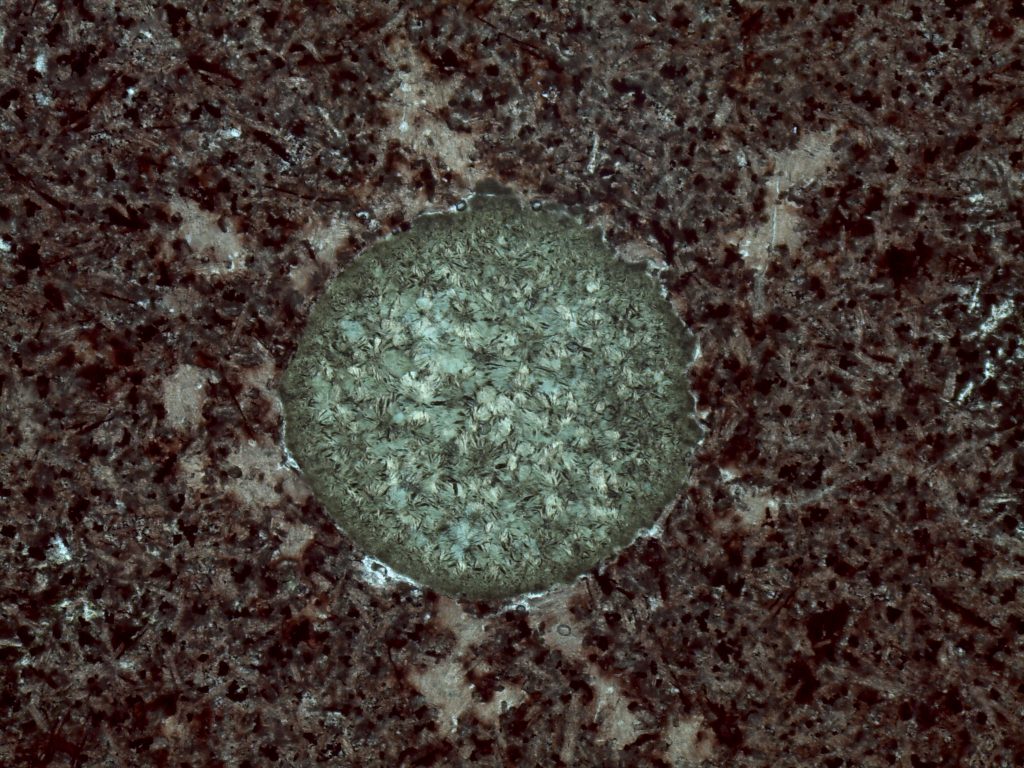



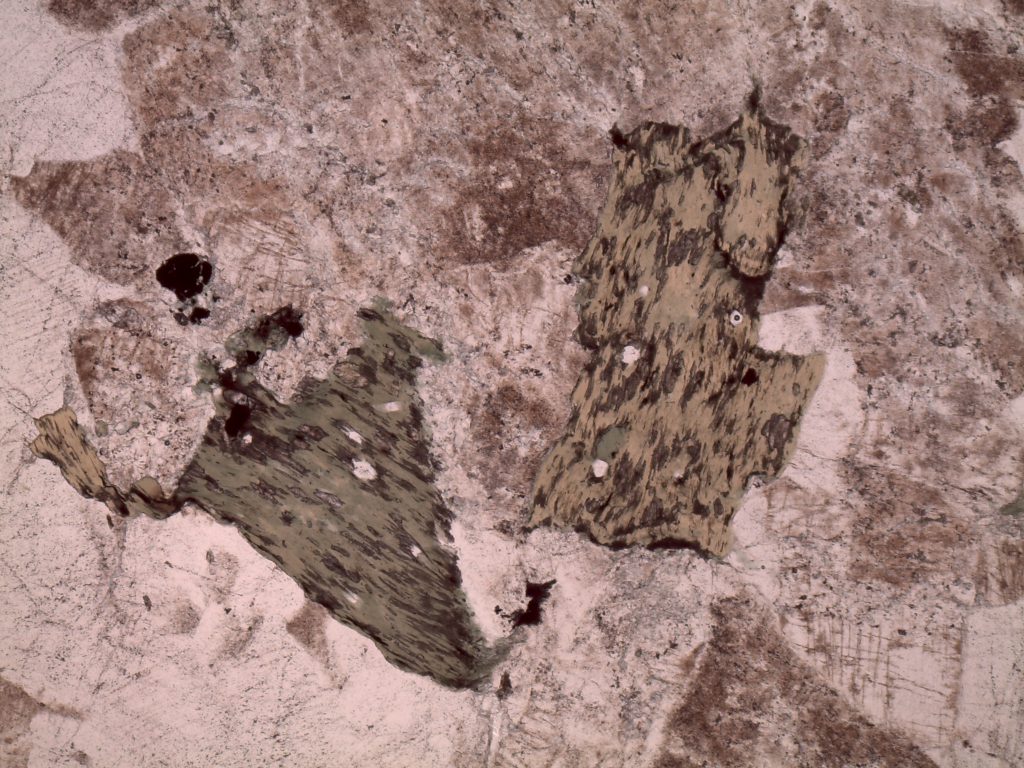
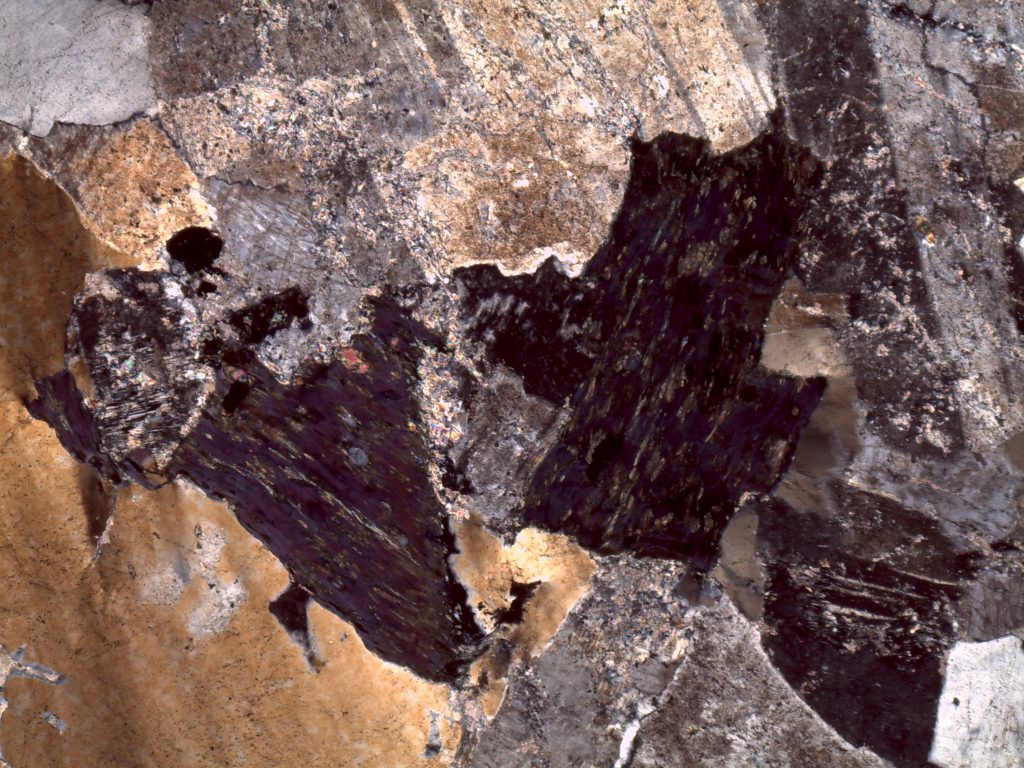
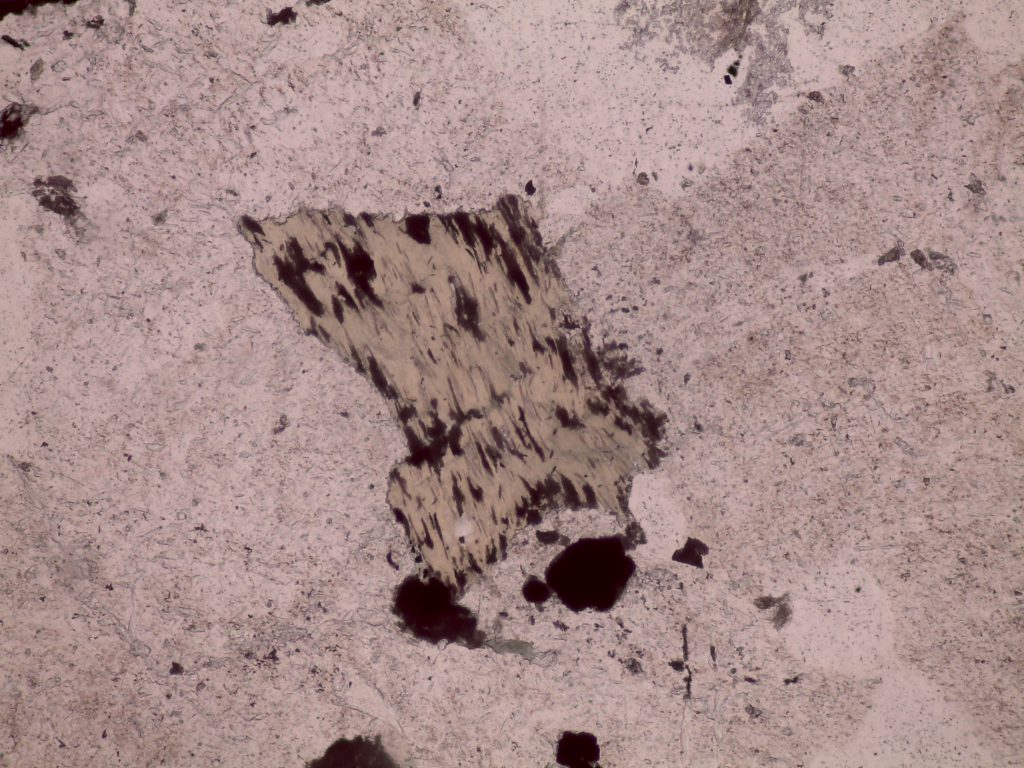
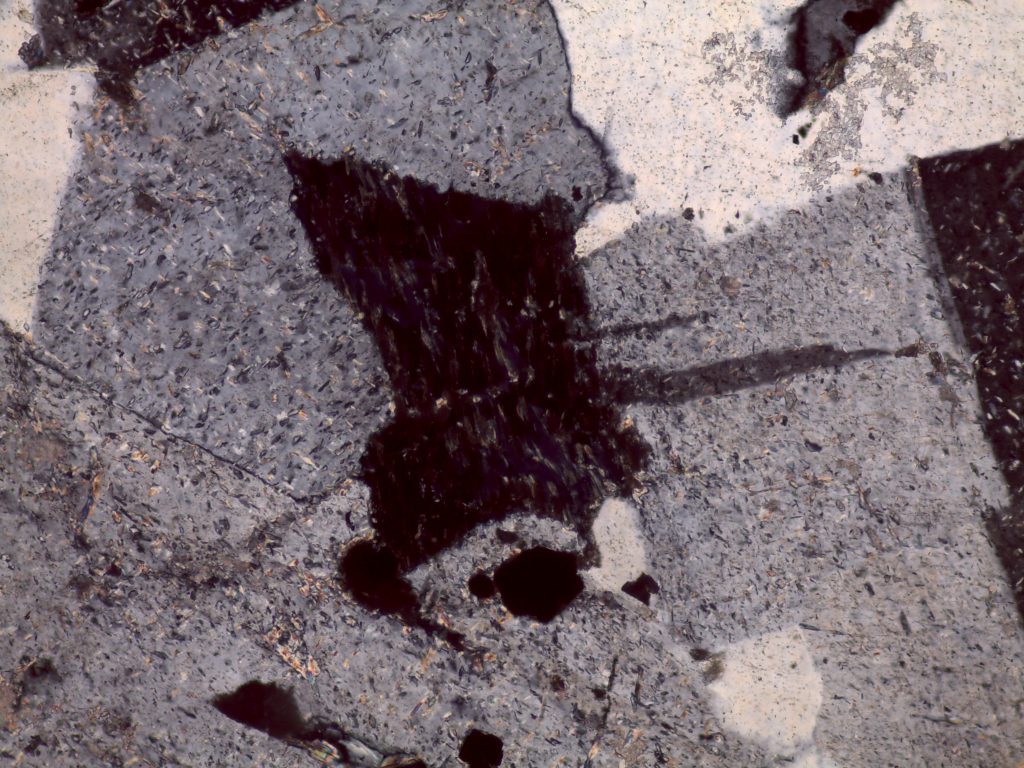
What’s that stuff that looks like dirt in PPL and confetti in XPL?
The feldspars alter to sericite, which is a catch-all name for fine-grained white mica whose identity can’t be pinned down just by looking at a thin section. This chlorite grain is surrounded by sericitized feldspars.